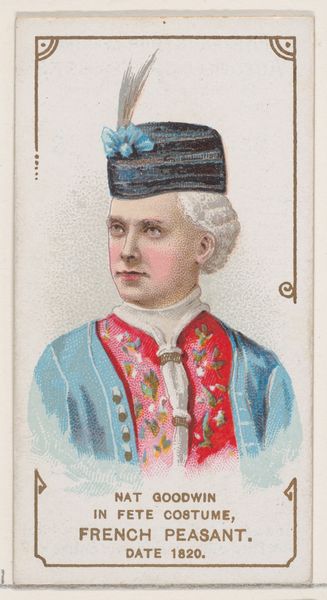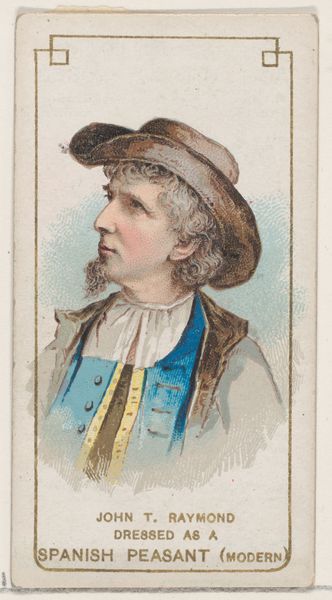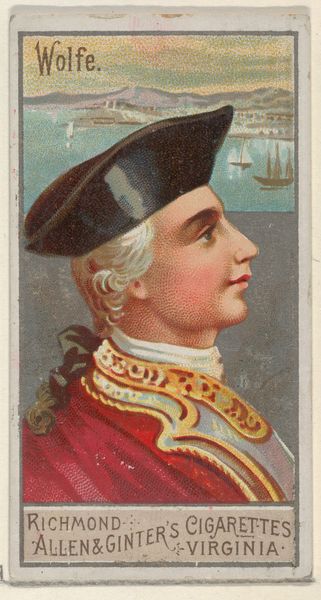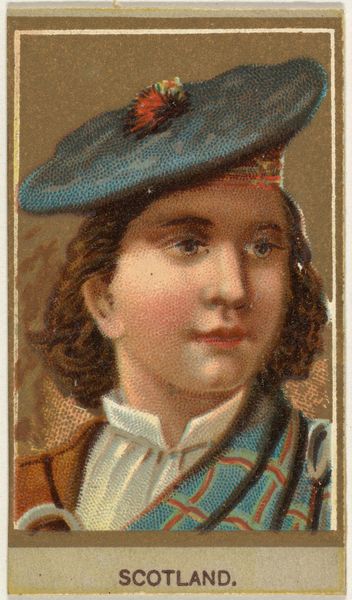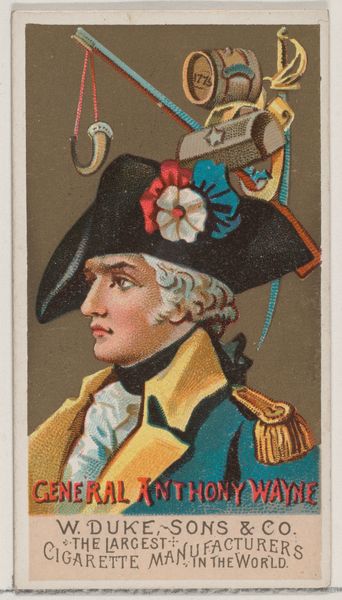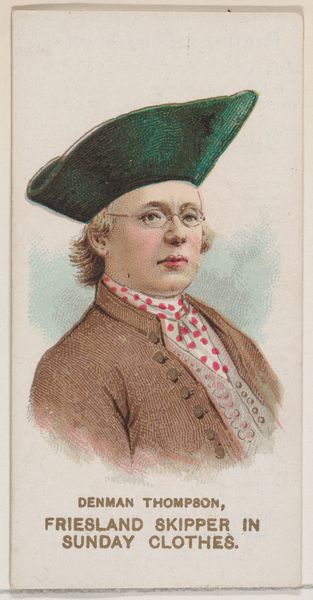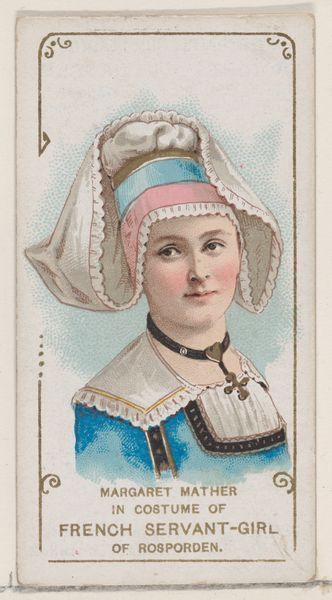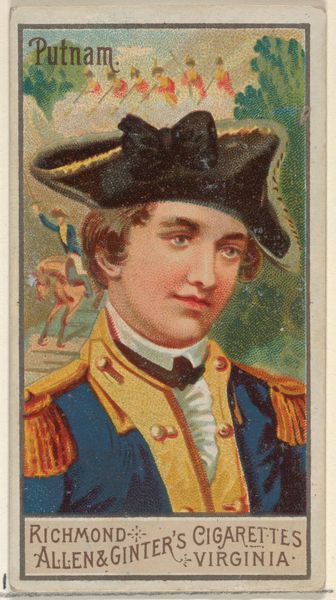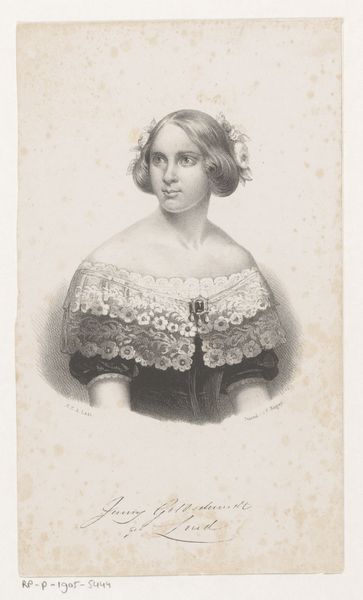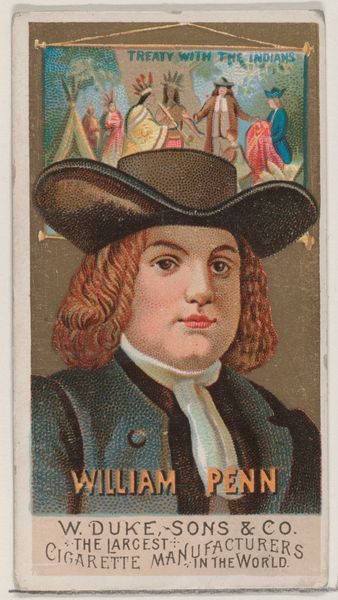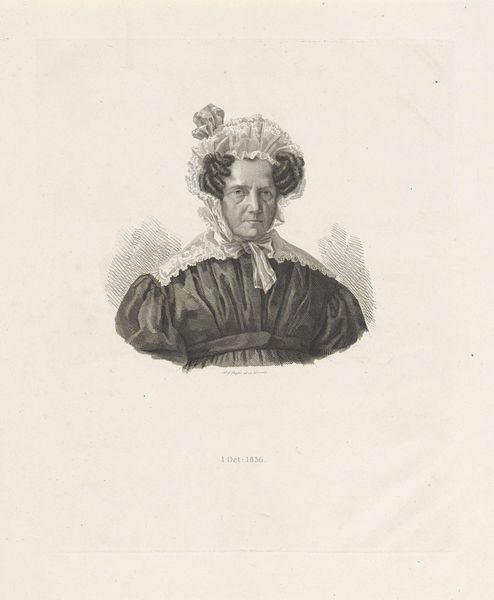
Lawrence Barrett in French Ordinary Costume of 1730, from the set Actors and Actresses, First Series (N70) for Duke brand cigarettes 1888 - 1889
0:00
0:00
drawing, coloured-pencil, print
#
portrait
#
drawing
#
coloured-pencil
# print
#
arts-&-crafts-movement
#
caricature
#
coloured pencil
#
men
#
genre-painting
#
academic-art
#
portrait art
Dimensions: Sheet: 2 3/4 x 1 1/2 in. (7 x 3.8 cm)
Copyright: Public Domain
Editor: This is a print from W. Duke, Sons & Co., dating from around 1888 to 1889. It's titled "Lawrence Barrett in French Ordinary Costume of 1730" and seems to be a colored-pencil drawing reproduced for Duke brand cigarettes. The level of detail for a cigarette card is surprising. What can you tell me about this piece, or others like it? Curator: Well, what immediately strikes me is how this object reveals the complex interplay between art, commerce, and celebrity in the late 19th century. Duke, a tobacco company, used these cards to boost sales. But think about what's *on* the card – an actor, in costume, referencing an earlier historical period. What does that layering of representation do, do you think? Editor: It feels like it's building layers of meaning. We have Barrett, the actor, then the "French Ordinary Costume," hinting at historical drama, and finally, it’s all wrapped up in an advertisement. Were these cards aimed at a specific audience? Curator: Absolutely. Consider the rise of popular culture and the emergent cult of celebrity during this period. The card offered consumers a glimpse into the lives of famous actors, linking their brand with aspirational figures. The 'Arts and Crafts' movement influence adds another layer. See how the aesthetic elevates the commercial object? Editor: So it's about more than just selling cigarettes? Curator: Precisely. It’s about constructing a cultural narrative. These cards were essentially circulating images that helped shape perceptions of history, theatre, and even national identity. How might displaying these portraits shape ideas about gender and class for consumers? Editor: That makes me think about how accessible these images would have been, compared to paintings hanging in galleries or private collections. They were democratizing access to art, in a way, while promoting a product. Curator: Exactly. And this highlights the public role of art, especially how commercial entities influenced taste and cultural values. A tiny card reveals so much! Editor: This really sheds a new light on something I would have just passed over as a vintage advertisement. I'll never look at trading cards the same way again! Curator: Wonderful. It’s about seeing how these seemingly minor objects functioned within broader social and historical frameworks. That's where the real story lies.
Comments
No comments
Be the first to comment and join the conversation on the ultimate creative platform.
